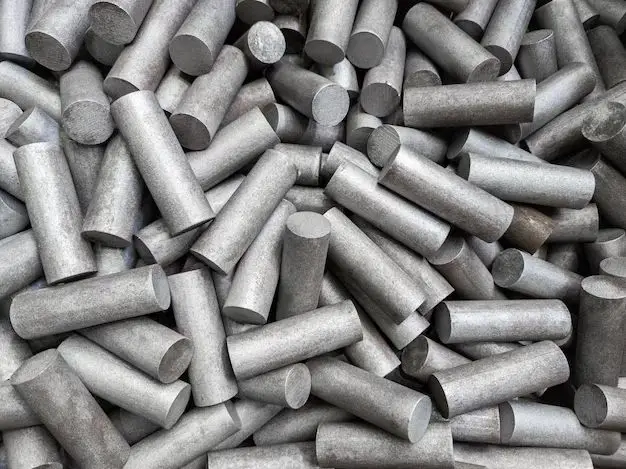Yes, stainless steel can be sanded. However, sanding stainless steel requires some special considerations compared to sanding other metals.
Page Contents
Why Sand Stainless Steel?
There are a few main reasons you may want to sand stainless steel:
- Removing scratches and defects from the surface
- Prepping for painting or powder coating
- Smoothing welds
- Getting a uniform satin finish
Proper sanding can help achieve a nice even finish on stainless steel. It takes patience and the right techniques, but it can be done.
Challenges of Sanding Stainless Steel
Stainless steel is harder than mild steel and has a tendency to work-harden as it’s machined or sanded. This makes sanding a bit more difficult.
Here are some of the main challenges:
- Work-hardening – The friction from sanding causes the surface to become harder and more difficult to abrade. This means you need to use the proper grit sequence and pressure.
- Galling – The steel can smear or “gall” which leaves behind gouges and uneven surface texture. To prevent galling, use lubricant and the right sandpaper.
- Surface contamination – Any contamination from carbon steel tools or particles can stain the stainless steel surface.
- Directionality – Sanding marks may show up more prominently on satin and mirror finishes. Sanding should go in the same direction across the whole surface.
Best Practices
Here are some tips for effective stainless steel sanding:
- Use aluminum oxide or silicon carbide sandpaper. Start with a coarse 80-120 grit to remove defects, then work up to 220-320 grit for finishing.
- Always sand in the same direction across the whole surface to get a uniform finish.
- Use a sanding block or hard pad to ensure even pressure.
- Lubricate the surface with WD-40, soapy water, or another liquid to prevent galling and clogging.
- Rinse the surface frequently to remove debris and prevent contamination.
- Work through each grit incrementally. Don’t jump from coarse to fine grits.
- Finish sanding marks from the previous grit before moving to a finer grit.
- Use a DA sander at low speeds for broad surfaces. Hand sanding works better for detailed areas.
- Sand welds until they are blended. Use a contour sander for tight spots.
Grit Progression
The general rule of thumb is to start sanding with 80-120 grit sandpaper if the steel has scratches, gouges or other defects. Then progressively work your way up to 220, 320, 400, 600 grit sandpaper before polishing with 800-1500 grit. The table below shows a typical grit progression:
| Grit | Use |
|---|---|
| 80 – 120 | Remove deeper scratches and defects |
| 150 – 220 | Smoothing and removing coarse sanding marks |
| 320 – 400 | Light surface sanding and blending |
| 600 – 800 | Fine finishing for uniform satin appearance |
| 800 – 1500 | Polishing and buffing for mirror-like finish |
Always check the surface after each grit and make sure sanding marks from the previous grit have been eliminated before moving up in grit size. This helps prevent deep coarser sanding marks from getting trapped under finer grits.
Sanding Tools
Having the right sanding tools helps streamline the process and get better results. Recommended tools include:
- DA orbital or dual-action sanders – Used for broad flat surfaces. Help prevent swirl marks and gouging.
- Rubber sanding blocks – Flexible blocks adapt to contours while providing good grip and even pressure.
- Contour or detail sanders – Smaller sanders to get into tight spaces like around welds.
- Sanding discs and pads – Used with the DA sander. Match grit to the stage.
- Sanding sponges – Less aggressive than sandpaper. Good for blending and contours.
- Sandpaper sheets – Cut into strips or shapes as needed. Helpful for hand sanding.
Be sure to clean tools frequently and have a system to keep carbon steel and stainless steel tools/surfaces separate. Contamination can ruin the finish.
Finishing Options
Once the stainless steel is sanded, there are a few options for finishing:
- Satin – Uniform straight sanding marks using 220-320 grit creates a soft satin sheen. A popular finish for appliances and commercial uses.
- Brushed – A linear brushed finish is created by sanding in one direction with 120-180 grit. Gives a distinctive grain pattern.
- Mirror – Sanding up to 1500 grit or higher polishes the steel to a chrome-like mirror finish. Requires meticulous sanding.
- Paint/Powder Coat – For color, stainless steel can be sanded and painted. Requires proper prep and primer.
The finish involves sanding in the appropriate final grit line pattern. Some finishes like mirror may also require buffing with compounds.
Tips for Avoiding Problems
Here are some tips to help avoid the most common problems when sanding stainless steel:
- Use lubricant to minimize galling and clogging of sandpaper.
- Keep carbon steel tools separate to avoid contamination.
- Sand in the same direction across the whole surface.
- Use a sanding block or pad for even pressure.
- Frequently rinse the surface and sandpaper.
- Work up grits progressively. Don’t skip more than 100 grit at a time.
- Blend sanding marks before moving to finer grits.
- Wear a mask to avoid inhaling fine debris.
- Change sandpaper as it gets clogged for optimal abrasion.
Conclusion
Sanding stainless steel takes patience and care, but it can produce outstanding finishes when done properly. The keys are using the right sanding tools and grit progression, taking measures to prevent contamination and galling, maintaining a consistent sanding pattern, and working through each stage incrementally. Sanding opens up a wide range of finishing options from satin to mirror polish. With some practice and the right techniques, you can sand stainless steel to a smooth, uniform finish.
